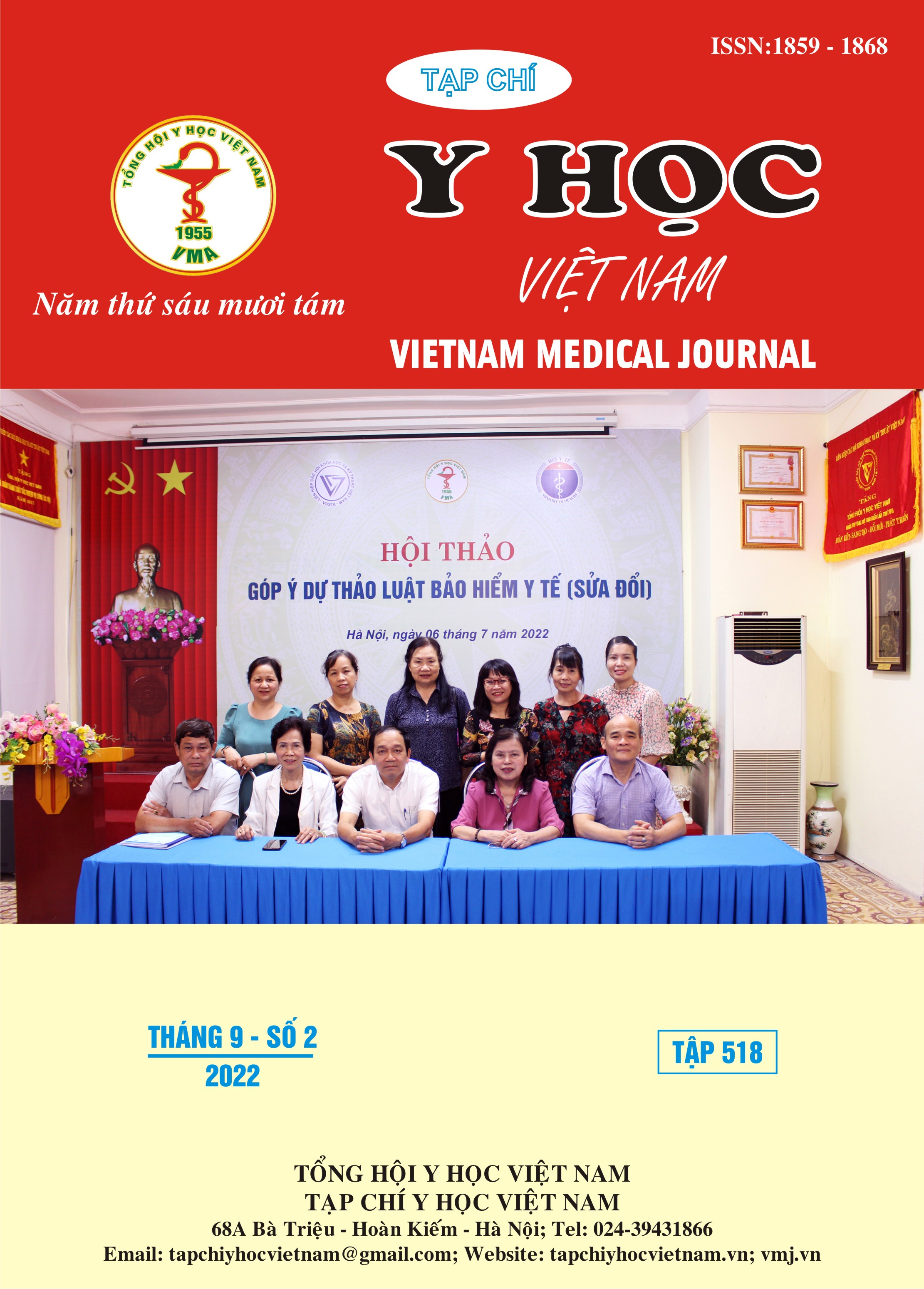CHARACTERISTICS OF DYSLIPIDEMIA AND LDLR GENE MUTATIONS IN TWO PEDIGREE OF EARLY ACUTE MYOCARDIAL INFARCTION IN TRA VINH GENERAL HOSPITAL IN 2021-2022
Main Article Content
Abstract
Background: familial hypercholesterolemia (FH) is an autosomal dominant disease caused mainly by mutations in the LDLR gene. Objectives: to study the characteristics of dyslipidemia, LDLR gene mutations in 02 pedigrees of patients with early acute myocardial infarction with dyslipidemia at Tra Vinh General Hospital in 2021-2022. Materials and methods: a cross- sectional descriptive study on a total of 65 members in 2 pedigrees of early acute myocardial infarction patients with dyslipidemia who were diagnosed and treated at the Department of Cardiology and Cardiology Tra Vinh General Hospital in 2021-2022. Results: considering both genealogies: 60% of members were aged 20-59; 58,5% of the members were male; 40% of members were overweight; 7,7% had obesity; smoking history and cardiovascular disease were also equal (7,7%); the prevalence of high blood pressure and diabetes were also not high at 12,3% and 10,8%, respectively. 63,1% of members had dyslipidemia, the disorders were mainly in combination form (63,4%). The degree of total cholesterol disorder was 73,8% of members with normal range. In the first pedigree had 17/35 (48,6%) members carrying mutation c.664T>C; the second pedigree had 14/30 (46,7%) members carrying the IVS7 +10 C>G mutation. All mutants were heterozygous. The total mutation rate was 47,7%. Among the characteristics of dyslipidemia, only the levels of total cholesterol disorder had a statistically significant relationship with the prevalence of LDLR gene mutations (p = 0,001). Conclusions: the prevalence of mutations in the two pedigrees was relatively high (47,7%), so screening for FH, which helps to reduce morbidity and mortality from cardiovascular disease in people with familial hyperlipidemia was essential.
Article Details
Keywords
dyslipidemia, LDLR, pedigree, early acute myocardial infarction
References
2. Lê Thị Yến, Vũ Đức Anh, Phạm Thị Minh Huyền và cộng sự (2019), Xác định đột biến exon 14 gen LDLR trên bệnh nhân tăng cholesterol máu có tính chất gia đình. Tạp chí y học Việt Nam, 482(65), 178-185.
3. Hoàng Thị Yến (2020), Nghiên cứu đột biến gen LDLR ở người tăng cholesterol máu có tính chất gia đình, Luận văn tiến sĩ, Trường Đại học Y Hà Nội.
4. Authors/Task Force Members; ESC Committee for Practice Guidelines (CPG); ESC National Cardiac Societies (2019), 2019 ESC/EAS guidelines for the management of dyslipidaemias: Lipid modification to reduce cardiovascular risk, Atherosclerosis, 290, pp.140-205.
5. Molfetta GA, Zanette DL, Santos JE, Silva WA Jr (2017), Mutational screening in the LDLR gene among patients presenting familial hypercholesterolemia in the Southeast of Brazil. Genet Mol Res. 31;16(3)
6. Huang, C.C and Charng, M.J. (2020), Genetic Diagnosis of Familial Hypercholesterolemia in Asia, Front in Genetic, 11, pp.1-12.
7. Huang C.C., Niu D.M., Charng M.J. (2022), Genetic Analysis in a Taiwanese Cohort of 750 Index Patients with Clinically Diagnosed Familial Hypercholesterolemia. J Atheroscler Thromb, 29(5):639-653.
8. Pham Thi Minh Huyen, Dang Quang Huy, Nguyen Quynh Giao and et al (2016), Identification of Mutations in exon 3 and 4 of the LDL-receptor gene in patients with familial hypercholesterolemia. Medical Research, 2354(7), 39-46.


